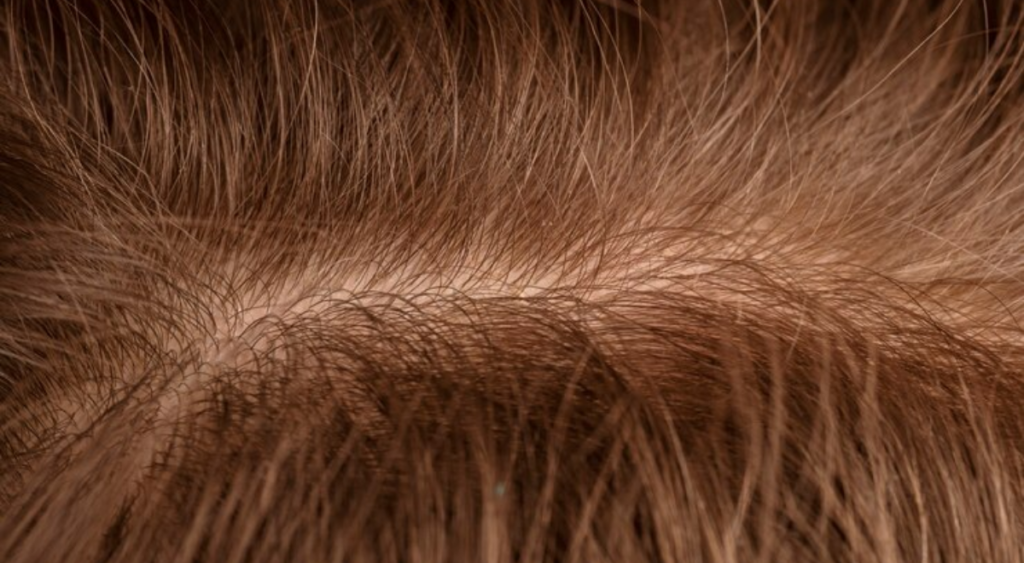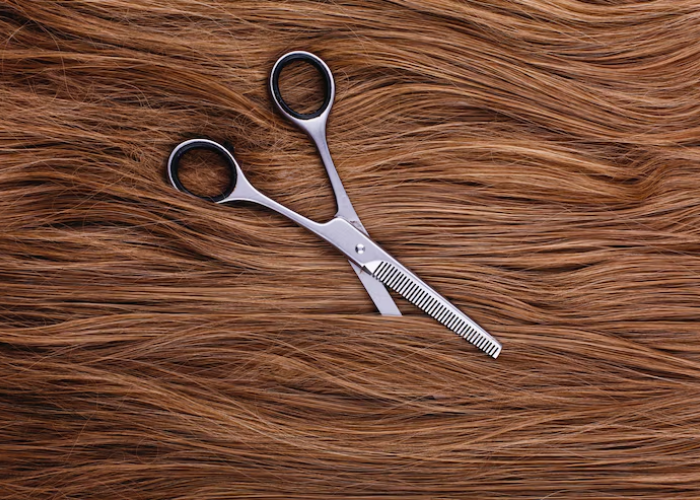The types of hair textures define the unique characteristics of hair,types of hair textures influencing how it looks, feels, and responds to styling or care. From straight and smooth to tightly coiled, hair texture varies widely across individuals, shaped by genetics, environment, and care routines. Understanding your hair texture is key to choosing the right products, styling techniques, and maintenance practices. This article explores the different types of hair textures, their characteristics, care tips, and more, tailored for those seeking to embrace their natural hair in the USA.
What Are the Types of Hair Textures?
types of hair textures refers to the thickness, types of hair textures shape, and pattern of individual hair strands. It’s typically categorized into four main types—Type 1 (straight), Type 2 (wavy), Type 3 (curly), and Type 4 (coily)—each with subtypes (A, B, C) based on specific traits. These classifications, popularized by hairstylist Andre Walker, help individuals identify their hair and adopt suitable care routines. Below, we break down each type of hair texture, including their defining features and prevalence.

Type 1: Straight Hair
types of hair textures Type 1 hair is straight, fine, and lacks natural curl. It’s often shiny due to natural oils easily traveling down the hair shaft. Subtypes include:
- Type 1A: Very fine, thin, and straight with no volume.
- Type 1B: Medium thickness with slight body.
- Type 1C: Thicker with more body and slight bend.
Prevalence: Common in those types of hair textures of Asian or Caucasian descent, with approximately 45% of the global population having some form of straight hair (source: Journal of Cosmetic Science, 2020).
Care Tips:
- Use lightweight, volumizing shampoos to avoid weighing hair down.
- Avoid heavy oils that can make hair appear greasy.
- Regular trims prevent split ends, as straight hair shows damage more visibly
Must Read:FintechZoom.com Business: Unlocking Its Best Fintech Analysis Potential in 2025!
Type 2: Wavy Hair
types of hair textures Type 2 hair has a slight wave, forming an “S” shape. It’s neither fully straight nor curly, offering versatility in styling. Subtypes include:
- Type 2A: Fine, loose waves with minimal definition.
- Type 2B: More defined waves with some frizz.
- Type 2C: Thicker, coarser waves that may form loose curls.
Prevalence: Wavy hair is seen in about 20% of the population, often among those of European or Latin American descent.
Care Tips:
- Use sulfate-free shampoos to maintain wave definition.
- Apply leave-in conditioners to combat frizz.
- Enhance waves with mousse or sea salt sprays for texture.
Type 3: Curly Hair
types of hair textures Type 3 hair forms defined curls, ranging from loose spirals to tight corkscrews. It’s prone to dryness as natural oils struggle to travel down the spiral structure. Subtypes include:
- Type 3A: Large, loose curls with a soft texture.
- Type 3B: Tighter, springy curls with more volume.
- Type 3C: Very tight curls, often dense and prone to shrinkage.
Prevalence: Curly hair is found in about 15% of the population, common among those of African, Mediterranean, or mixed heritage.
Care Tips:
- Deep condition weekly to combat dryness.
- Use a wide-tooth comb to detangle wet hair, minimizing breakage.
- Opt for curl-defining creams to enhance shape without crunchiness.
Type 4: Coily Hair
Type 4 hair is tightly coiled or zig-zagged, often with significant shrinkage (up to 75% of its actual length). It’s the most fragile texture due to its structure. Subtypes include:
- Type 4A: Soft, small coils with a defined pattern.
- Type 4B: Z-shaped strands with less definition.
- Type 4C: Tightly packed, kinky strands with minimal curl definition.
Prevalence: Coily hair is prevalent in about 20% of the population, primarily among those of African descent.
Care Tips:
- Moisturize daily with water-based leave-ins or oils like shea butter.
- Protective styles (e.g., braids, twists) reduce breakage.
- Avoid heat styling to maintain hair health.
Top Hair Feature
1. Straight Hair (Type 1) – Smooth and Shiny
Straight hair tends to be naturally smooth and reflects light easily, giving it a shiny look. It doesn’t curl much and often feels soft and silky.
2. Wavy Hair (Type 2) – Loose Waves with Body
Wavy hair has a natural “S” shape. It’s not too curly or too straight, offering a great balance of volume and movement without too much frizz.
3. Curly Hair (Type 3) – Defined Curls with Bounce
Curly hair forms well-defined ringlets or spirals. It’s usually more voluminous and has a lot of bounce but may need extra moisture to prevent dryness.
4. Coily/Kinky Hair (Type 4) – Tight Curls with Texture
Coily hair has tight curls or zigzag patterns. It’s the most fragile hair type and has lots of texture, often appearing thick and full but needing gentle care to avoid breakage.
Why Hair Texture Matters
Understanding the types of hair textures helps you tailor your haircare routine. For example, Type 1 hair requires minimal moisture, while Type 4 hair thrives on hydration. Texture also influences styling choices—curly hair may hold braids better, while straight hair suits sleek updos. Additionally, knowing your texture fosters self-acceptance, especially in a society where diverse hair types are increasingly celebrated.
Stat: A 2023 survey by Texture Trends found that 68% of Americans with curly or coily hair felt more confident after learning to care for their natural texture.
Factors Influencing Hair Texture
Hair texture isn’t static—it can change due to:
- Genetics: The shape of hair follicles (round for straight, oval for curly) determines texture.
- Environment: Humidity can enhance waves, while dry climates increase frizz.
- Chemical Treatments: Relaxers, perms, or dyes can alter texture permanently or temporarily.
- Aging: Hair may become finer or lose curl definition over time.
Tips for Caring for All Types of Hair Textures
Regardless of texture, healthy hair requires consistent care. Here are universal tips:
- Cleanse Gently: Use sulfate-free shampoos to avoid stripping natural oils.
- Hydrate: Condition regularly, focusing on ends to prevent dryness.
- Protect at Night: Sleep on satin pillowcases or use bonnets to reduce friction.
- Limit Heat: Use heat protectants and low settings when styling.
- Trim Regularly: Remove split ends every 8–12 weeks to maintain length.
Example: For Type 3B hair, try the LOC method (Leave-in, Oil, Cream) to lock in moisture and define curls. Apply a leave-in conditioner, followed by a lightweight oil like argan, and seal with a curl cream.

Common Myths About Hair Textures
- Myth: Curly and coily hair doesn’t grow long.
- Truth: All hair grows at an average rate of 0.5 inches per month. Shrinkage and breakage may make Type 3 and 4 hair appear shorter.
- Myth: Straight hair is low-maintenance.
- Truth: Straight hair can be prone to oiliness and visible damage, requiring specific care.
Embracing Your Hair Texture
The natural hair movement, gaining traction in the USA since the 2010s, encourages individuals to embrace their unique types of hair textures. Brands like Curlsmith and SheaMoisture cater to diverse textures, offering specialized products. Social media platforms like Instagram and TikTok also showcase tutorials for styling Type 2, 3, and 4 hair, fostering community and creativity.
Stat: A 2024 report by Beauty Insights noted that sales of curly and coily hair products grew by 25% in the USA, reflecting demand for texture-specific care.
Call-to-Action
Ready to embrace your hair’s natural beauty? Identify your hair texture using the classifications above and experiment with products tailored to your type. Share your haircare journey in the comments or consult a stylist for personalized advice. Visit our blog for more tips on mastering your haircare routine!
Final Thoughts
Understanding your hair texture—whether it’s straight, wavy, curly, or coily—is the first step to proper hair care. Each texture has its own unique beauty and requires different products, techniques, and maintenance routines. Embrace your natural texture, and focus on keeping your hair healthy, hydrated, and styled in a way that works for you. Whether you’re experimenting with new looks or just learning what your hair loves, knowledge is power—and so is great hair care.
Conclusion
No matter your hair texture—straight, wavy, curly, or coily—every type is beautiful and unique. Understanding your texture is the foundation for building a hair care routine that works for you. By learning what your hair needs and how it behaves, you can choose the right products, avoid damage, and keep your hair looking and feeling its best. Embrace your natural texture and enjoy the journey of healthy hair care.
FAQS
1. What Are the Different Types of Hair Textures?
The main types of hair textures are:
- Type 1 (Straight)
- Type 2 (Wavy)
- Type 3 (Curly)
- Type 4 (Coily/Kinky)
Each type is further divided into A, B, or C based on the thickness and curl pattern. Understanding your type helps in choosing the right hair care routine.
2. How Can I Identify My Hair Texture Type?
To identify your hair texture, wash and air-dry your hair without applying any products. Observe the pattern:
- Straight with no wave = Type 1
- Loose S-shapes = Type 2
- Defined spiral curls = Type 3
- Tight coils or zig-zags = Type 4
3. Can Hair Texture Change Over Time?
Yes, your hair texture can change due to hormonal shifts, age, heat styling, or chemical treatments. Even environmental factors and diet can play a role. It’s common to see changes in hair texture during puberty, pregnancy, or menopause.
4. What’s the Best Way to Care for Different Types of Hair Textures?
Each hair texture needs a different approach:
- Type 1 (Straight): Use lightweight products to avoid oil buildup.
- Type 2 (Wavy): Enhance waves with mousse or gel.
- Type 3 (Curly): Moisturize regularly with curl creams.
- Type 4 (Coily): Focus on deep conditioning and protective styles to retain moisture and prevent breakage.










